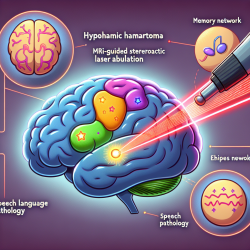Introduction
As practitioners dedicated to fostering positive outcomes for children, it is essential to stay informed about the latest research and its implications. A recent study titled The association between depressive symptoms from early to late adolescence and later use and harmful use of alcohol provides valuable insights that can enhance our practice. This blog will explore the key findings of the study and offer practical recommendations for implementing these insights to improve adolescent outcomes.
Understanding the Research
The study, conducted by Edwards et al. (2014), utilized data from a large UK cohort to examine the relationship between depressive symptoms during adolescence and subsequent alcohol use at age 18. The researchers found that elevated depressive symptoms during adolescence are positively associated with increases in both use and harmful use of alcohol. Notably, these associations differed between males and females, with females showing a stronger link between depressive symptoms and harmful alcohol use.
Key Findings
- Among females, increasing depressive symptoms were associated with increased alcohol use.
- For males, there was little evidence of this association.
- Baseline levels of depressive symptoms in males were weakly related to later harmful alcohol use, but this association was attenuated by adjusting for confounders.
- In contrast, both baseline symptoms and increases in symptoms were associated with later harmful alcohol use in females, and these associations were not diminished by confounder adjustment.
Implications for Practitioners
These findings underscore the importance of early identification and intervention for depressive symptoms in adolescents, particularly females. As practitioners, we can leverage this research to enhance our practice in several ways:
1. Early Screening and Identification
Implement routine screening for depressive symptoms in adolescents, especially during critical developmental periods. Early identification can facilitate timely intervention and potentially mitigate the risk of harmful alcohol use later in life.
2. Gender-Specific Interventions
Develop and implement gender-specific interventions that address the unique needs of males and females. For females, interventions should focus on managing depressive symptoms and providing coping strategies to reduce the likelihood of alcohol misuse.
3. Holistic Approach
Adopt a holistic approach that considers the interplay between depressive symptoms and other risk factors, such as conduct problems and peer influences. This comprehensive perspective can inform more effective intervention strategies.
4. Collaboration and Continued Research
Collaborate with researchers and other practitioners to stay updated on the latest findings and best practices. Encourage ongoing research to further explore the mechanisms underlying the link between depressive symptoms and harmful alcohol use, which can inform future interventions.
Conclusion
By integrating the insights from this study into our practice, we can better support adolescents in managing depressive symptoms and reducing the risk of harmful alcohol use. As practitioners committed to creating positive outcomes for children, it is our responsibility to stay informed and apply evidence-based strategies in our work.
To read the original research paper, please follow this link: The association between depressive symptoms from early to late adolescence and later use and harmful use of alcohol.










